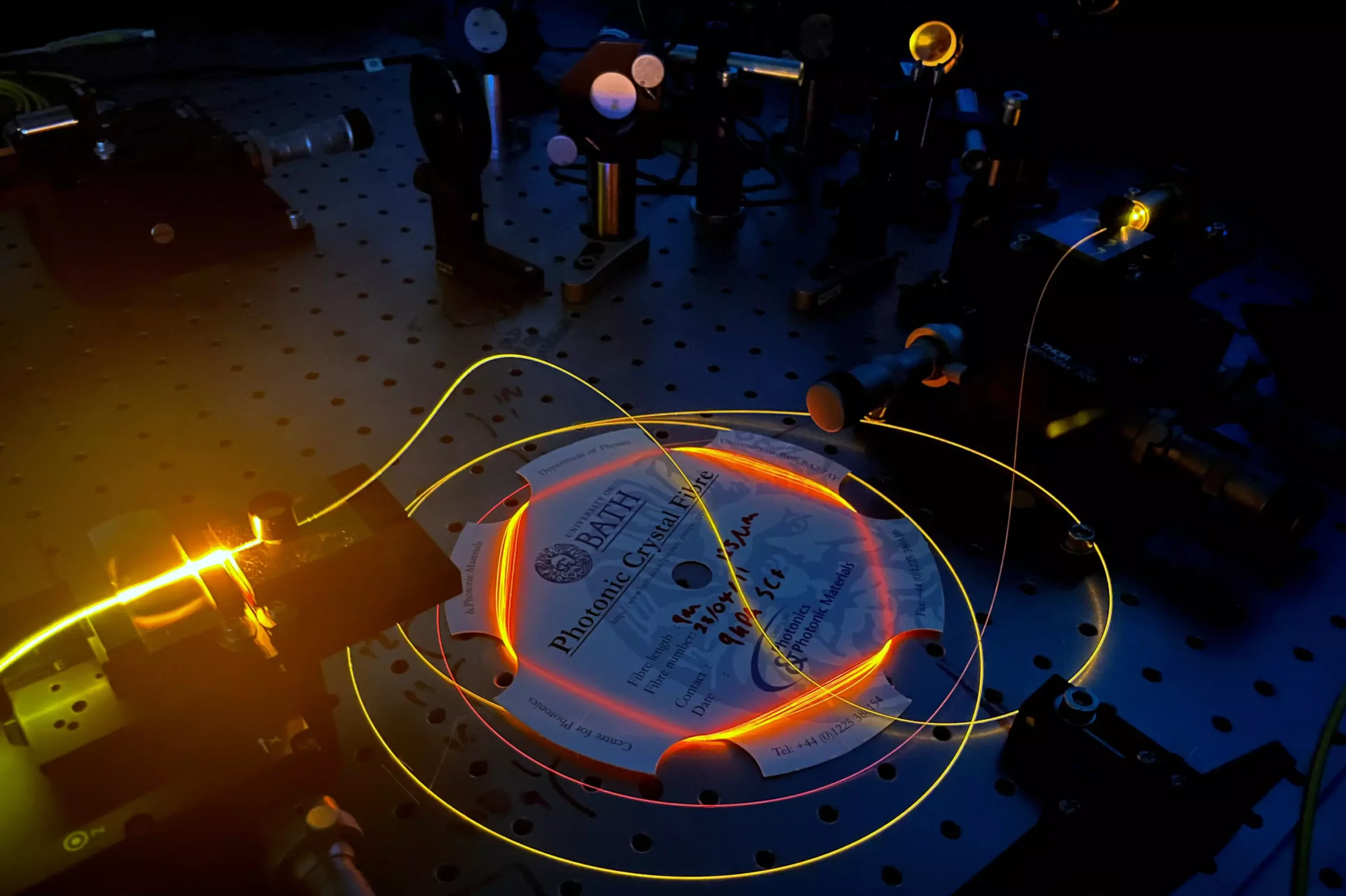In an era where quantum computing promises to reshape our technological landscape, researchers at the University of Bath are breaking new ground with innovative optical fibers designed specifically for future quantum communication. This initiative is not merely an upgrade; it represents a transformative leap towards establishing a functional quantum internet. The implications of these advancements are profound, heralding a new age of computational power that could solve complex issues ranging from drug development to secure communications via unbreakable cryptography.
Current communication systems primarily rely on traditional optical fibers with solid silica cores. While effective for classical data transfer, these fibers are ill-equipped to handle the nuanced demands of quantum data transmission. The conventional fibers transmit light at wavelengths dictated by the limitations of silica glass, rendering them incompatible with the advanced technologies needed for quantum computing. Dr. Kristina Rusimova, a key figure in the research team, highlights the critical nature of these innovations, stating that the new micro-structured fibers feature intricate air pockets that significantly alter how light propagates through them.
Understanding Quantum Mechanics in Fiber Design
The core advantage of these specialty fibers lies in their capacity to tap into the unique properties of photons, the elementary particles of light. Quantum entanglement is one such phenomenon, allowing photons separated by vast distances to influence one another’s state instantaneously. This reality contrasts starkly with the binary nature of classical computing, giving quantum systems the ability to operate in multifaceted states simultaneously—an aspect that could unleash unprecedented computational capabilities.
The concept of a “quantum internet” is crucial for realizing the full potential of these technological advances. Dr. Cameron McGarry emphasizes that similar to the classical internet, a quantum internet is predicated on the principles of optical fiber communication. However, it necessitates fibers that are not only fundamentally different from existing ones but also embedded within a broader ecosystem of supportive technologies. This ensures that the infrastructural frameworks for the quantum internet can sustain scalability and operational efficiency.
Addressing Scalability and Robustness Challenges
The transition to a quantum communication framework is rife with challenges, particularly when it comes to establishing a robust network for widespread use. The researchers at Bath propose several solutions aimed at enhancing the capabilities and scaling potential of their innovative fibers. These include long-range communication fibers and specialty fibers designed to integrate quantum repeaters directly into the existing infrastructures. Such developments will enable far broader networks, extending the operational range of quantum technology.
Moreover, the potential of these optical fibers transcends mere connectivity. They could play a crucial role in performing quantum computations directly at the nodes of the network. By functionally acting as sources of entangled photons, quantum wavelength converters, or even low-loss switches, these fibers could revolutionize how quantum computing tasks are tackled. This multi-functional characteristic would allow researchers to harness the fibers not only as conduits of data but also as active instruments in quantum processing.
Implications for Quantum Research and Industry
The momentum surrounding microstructured optical fibers extends beyond academia, finding relevance in industries eager to adopt cutting-edge technologies. Dr. Kerrianne Harrington, a postdoctoral researcher at Bath, advocates for the significance of these developments, pointing out that the rapid advancements in fiber technology can open pathways to solutions in quantum applications, likely impacting sectors such as telecommunications, security, and even scientific research.
Dr. Alex Davis notes that the effectiveness of these fibers in confining and transporting light across considerable distances attributes to their utility in generating entangled photons. This capability not only facilitates more dynamic quantum states but also has ramifications for precision sensing and secure message encryption—both indispensable components in an increasingly digital world.
While the promise of quantum advantage remains largely theoretical, the summarized challenges serve as a crucial roadmap for ongoing research in the field. The optical fibers emerging from the University of Bath provide a solid foundation for potential breakthrough discoveries in quantum information processing. These fibers signify not just the enhancement of existing technologies but the dawn of a new computational paradigm that could redefine our understanding of data transfer and processing. The efforts at Bath underline a crucial juncture in our journey towards realizing the quantum age, ensuring that we are not merely observers but active participants in an unfolding scientific revolution.

